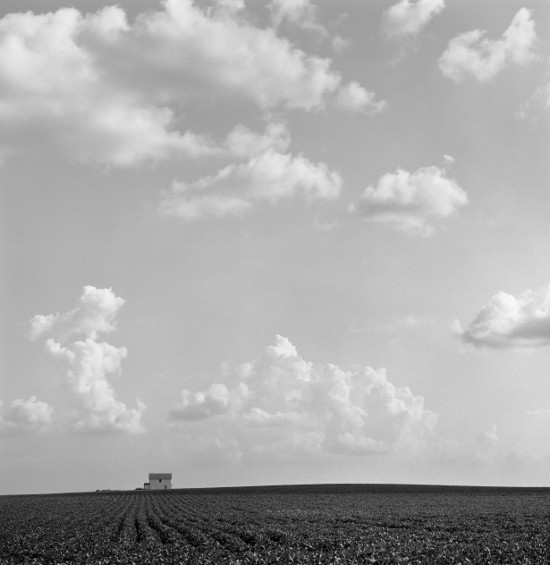
Iowa is hardly renowned for dramatic landscape or architecture. One can drive for miles with no sign of life other than a road and a tilled field.
Bean Field & House, Grundy County, Iowa 2003 by photographer David Plowden dramatically depicts such a bare scene. Roughly 80 percent of the composition is sky, with sparse, fluffy clouds. At the bottom is a strip of dark land, with rows of crops running to the horizon. On the left side is a boxy house, which becomes an interesting subject when framed by the immense sky. The lines of beans bring the viewers' eyes upward, emphasizing the void. The tininess of the house in the picture makes the viewer feel diminutive.
Plowden's composition illustrates that the beauty of Midwestern scenery often lies in its grand simplicity, and how that alters the sense of scale. The stark flatness of the land, only occasionally punctuated by trees or farm buildings, shifts our field of vision; the sky begins to seems bigger, and everything on the ground becomes smaller.
David Plowden's Iowa (at the Figge Art Museum through August 26) masterfully captures the scale-warping effects of the landscape, and the photographer's 47 images of rural and small-town Iowa ably document the Midwestern agricultural aesthetic.
But he also manipulates and confuses viewers' perceptions - of size, distance, plainness, and even time - through artistic tools such as juxtaposition, viewing angle, and lack of context.